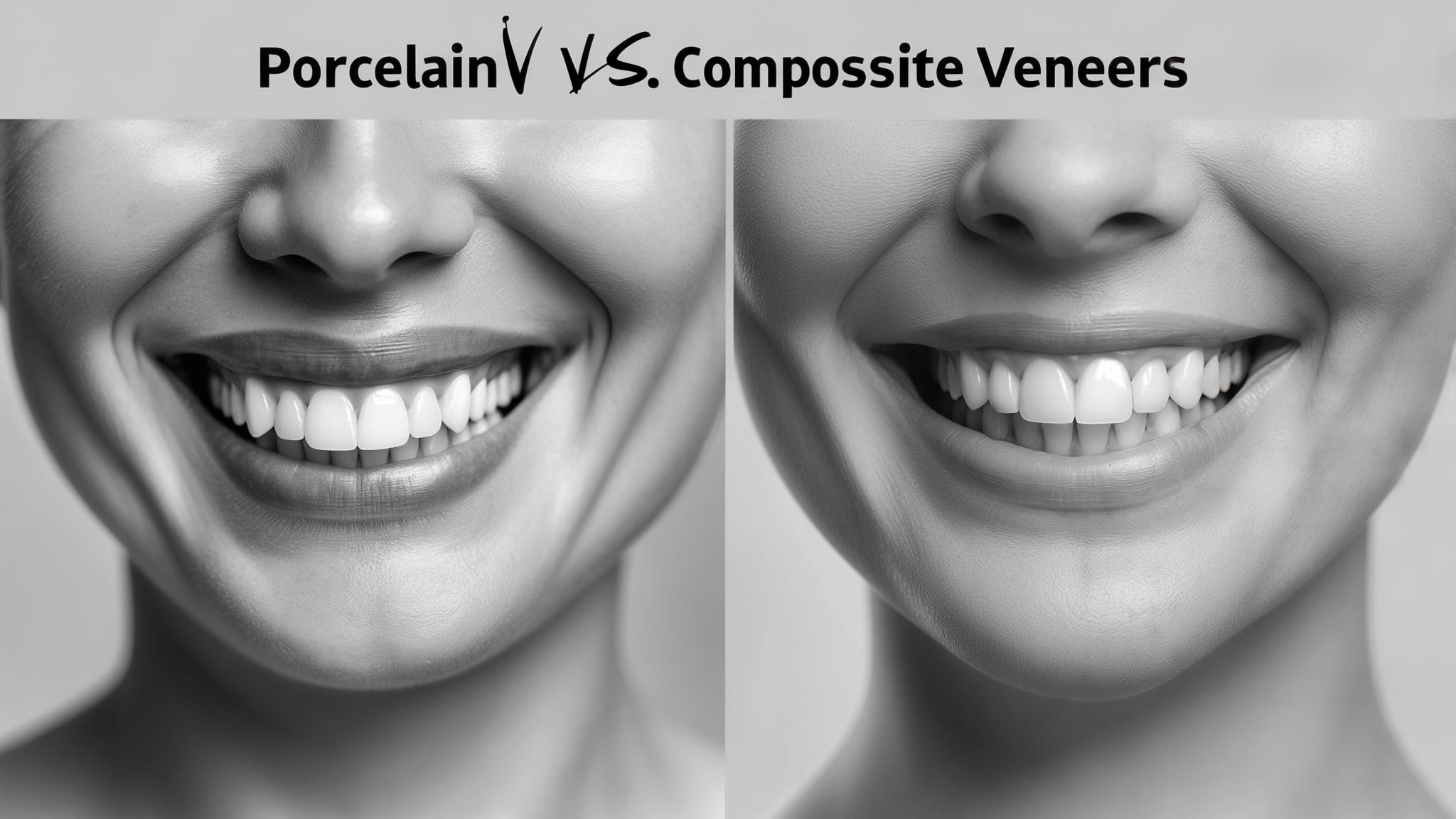Understanding Veneers
What are Veneers?
Veneers are thin, custom-made shells designed to cover the front surface of teeth, enhancing their appearance. They're a popular choice in cosmetic dentistry for correcting discoloration, chips, and gaps. Porcelain and composite are the two main types of veneers, each with unique characteristics.
The Process of Getting Veneers
- Consultation and Assessment: The journey begins with a consultation where your dentist evaluates your teeth and discusses your goals.
- Preparation of Teeth: For porcelain veneers, a small amount of enamel is removed to ensure a natural fit. Composite veneers require less preparation.
- Application of Veneers: Porcelain veneers are crafted in a lab and bonded to the teeth, while composite veneers are applied directly and shaped by the dentist.
Porcelain Veneers
Description of Porcelain Veneers
Porcelain veneers are renowned for their superior aesthetic quality. They are crafted from a ceramic material that mimics the natural translucency of tooth enamel.
Pros of Porcelain Veneers
- Aesthetic Appeal: Porcelain veneers offer a highly natural look, closely resembling real teeth.
- Durability and Lifespan: They can last 10-15 years with proper care.
- Stain Resistance: Porcelain is resistant to stains from coffee, tea, and wine.
- Natural Appearance: Their light-reflecting properties give a realistic look.
Cons of Porcelain Veneers
- Cost: They are more expensive than composite veneers.
- Irreversibility: The enamel removal process is irreversible.
- Time-Consuming Process: Requires multiple dental visits.
- Potential for Chipping or Cracking: Though durable, they can still be damaged.
Composite Veneers
Description of Composite Veneers
Composite veneers are made from a resin material applied directly to the teeth. They are a less invasive option compared to porcelain.
Pros of Composite Veneers
- Cost-Effectiveness: Generally more affordable than porcelain veneers.
- Quick Application Process: Can be completed in a single dental visit.
- Less Tooth Reduction Required: Minimal enamel removal is needed.
- Easy Repairs: Chips and damage can be easily repaired.
Cons of Composite Veneers
- Shorter Lifespan: Typically last 5-7 years.
- Stain Susceptibility: More prone to staining over time.
- Less Natural Appearance: May not mimic tooth enamel as closely.
- Potential for Wear and Tear: More susceptible to damage than porcelain.
Comparing Porcelain and Composite Veneers
Aesthetic Differences
Porcelain veneers offer a more natural look due to their translucency and light-reflecting properties. Composite veneers, while improving appearance, may not match the realism of porcelain.
Durability and Lifespan Comparison
Porcelain veneers outlast composite veneers, with a lifespan of up to 15 years compared to 5-7 years for composites.
Cost Analysis
While porcelain veneers are more costly, they offer long-term value due to their durability. Composite veneers are budget-friendly but may require more frequent replacements.
Maintenance and Care
Both types require regular dental check-ups and good oral hygiene. Porcelain veneers need less maintenance due to their stain resistance.
Suitability for Different Dental Issues
Porcelain veneers are ideal for significant cosmetic changes, while composite veneers are suitable for minor corrections and budget-conscious patients.
Conclusion
In summary, both porcelain and composite veneers have their own set of advantages and disadvantages. It's crucial to consult with a dental professional to determine which option aligns with your aesthetic goals, budget, and lifestyle. Remember, the best choice depends on your individual needs and circumstances.

